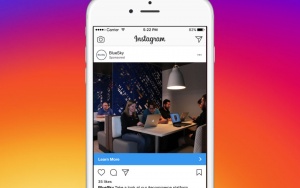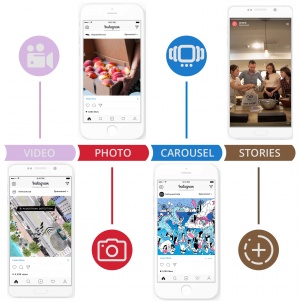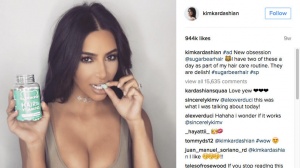Instagram Ads
Instagram is a free and the largest growing social media platform with more than 1 billion active users. Instagram has experienced remarkable growth in the past five years. The advent of Instagram brought a new experience for social networking enthusiasts. A growth of almost 30+% in a little time tells us more about this platform’s popularity and future potential than anything else. Advertisements are an integral part of many of the most popular social media platforms, such as Facebook, Twitter, LinkedIn, and YouTube, and in September 2015, the image-sharing mobile application Instagram opened advertising for businesses worldwide as a new channel for reaching customers too. According to Instagram, 60% of users say they discover new products on Instagram and 70% of users take an action after being inspired by an Instagram post. Those numbers make a good case that users do engage with Instagram content on a meaningful level.
Contents
The Beginning
Instagram was developed in San Francisco by Kevin Systrom and Mike Krieger. Introduced in 2010, Instagram has positioned itself as a fun and quirky platform through which people share their lives and friends [1]. Users download a free Instagram mobile application and snap photos then filter the photo to transform the images before sharing it to other social platforms such as Facebook and Twitter. The growing number of users of Instagram has attracted the business community who now use the platform to share their ads [2]. However, the platform has several ethical concerns that regulate the sharing of ads. The advertisements are now an integral part of Instagram and it is not possible to, for example, buy an upgrade or a premium version to have them disappear, but users do have the option of hiding single advertisements. Instagram has proven itself a powerful platform for marketers to reach their customers and prospects through sharing pictures and brief messages. According to a study by Simply Measured, 71% of the world's largest brands are now using Instagram as a marketing channel. [3]
Ad Formats
- Instagram will begin taking advantage of augmented reality (AR) ads this year after assessing the technology's growth on Facebook. Instagram enjoys a network of over a billion users, and AR is growing in popularity and sophistication — so the two together is certainly big news. Instagram's AR ads promise an integrated user experience that should help customers engage meaningfully with brands and products. [4].
- Photo ads: Photo ads include a single image, a caption, and a call-to-action. [5].
- Video ads: Videos ads include a single video up to 60 seconds long that can be shot in landscape or portrait orientation, a caption, and a call-to-action. Video ads can include sound.
- Carousel ads - They include a carousel of images or videos that the user can swipe through to discover more content. Carousel ads offer a means of telling a more complete brand or campaign story, or showcasing a range of offerings.
- Stories ads - Stories ads were first introduced in 2016 but were only recently rolled out globally to all advertisers. Stories ads are immersive, full-screen ads that appear between user’s Stories. Audio for Stories ads will play automatically if the user has sound turned on.
- Collection ads: Tell an integrated story with a product or lifestyle focus, through video, images or both.
Influencer Marketing
Influencers on Instagram are people that influence others. The move, according to Instagram, is in response to brands’ desire to better target users and offer a more organic ad experience. According to Instagram, 68 percent of its regular users say they come to the platform to interact with “creators.” Instagram has about one billion monthly active users, according to a company spokeswoman, who declined to share how much influencer marketing is worth. As a highly popular social network especially amongst young people, Instagram’s appeal for marketers is inevitable. Instagram is becoming the go to destination for influencer marketing. Many brands have also started marketing on this platform and have become big influencers. Businesses are allowed to have a business profile with insights to help evaluating their marketing strategies and get to know their audience better. Nowadays, many users' purchase decisions are based on views of influential people they follow. This can considered as the most effective strategy to help build lasting business awareness in the long run.
Terms of Service and Privacy
Instagram is a social platform that deeply relies on the sharing of photos. Hence the issue of user privacy is a big issue. [6]. Several years ago, Instagram announced changes in its privacy policies and the terms for its use. Based on the changes, a business could pay Instagram to display their ads inform of the users’ photos and other personal details featuring sponsored or paid content without any form of compensation to the user. Therefore, the platform does not have an option to opt-out. Photographers and celebrities who mostly sold their photos for advisements disputed this move[7].
Instagram then changed its privacy policies to allow the company to retain the rights of sharing the user’s information with other companies like Facebook.[8]. Also, it stated that users will grant the company non-exclusive, royalty-free, fully paid, and transferable worldwide licenses to share their content.
Instagram still experiences uneasiness among its users concerning the issue of privacy. Instagram provides free services to users and until now it has been free of advertisements unlike most social media platforms like Twitter and Facebook. Therefore, the issue of privacy might remain a challenge because the company needs to generate revenue to remain viable in this competitive market. Clearly, an advertisement is the only obvious way to go.
Campaigns
National Geographic
After reaching 100 million followers on Instagram from their photographs around the world campaign where the Instagram account segment campaigns targeted at young photographers. National Geographic’s user generated content campaigns were successful because it was just one part of their overall channel strategy. [9]
Airbnb
By collaborating with some of the world’s most famous celebrity influencers on Instagram, Airbnb has obtained broad exposure, reaching a total potential audience of nearly 1 billion Instagram users in the past two years. Airbnb’s influencer marketing efforts began in July 2015 when Mariah Carey stayed in a luxurious Airbnb mansion in Malibu. Airbnb is able to achieve immense campaign reach and profound results that travel beyond Instagram. [10]
Controversies
Detox Teas
Social media marketing for weight loss products has been a subject of controversy due to concerns around their health effects. These companies pay influencers to post about their product on social media, namely Instagram. Within the last several years, the Federal Trade Commission began cracking down on influencer marketing. In 2017, the Federal Trade Commission said that influencers to disclose ad posts using hashtags in their post descriptions such as “ad” or “sponsored.” [11]
The Kardashian
Online influencers like the Kardashians have long peddled weight loss teas to their millions of followers on Instagram and YouTube. Many of the sisters, including Khloe and Kylie, have posted pictures promoting their use of "Flat Tummy Tea," which is a detox tea.
Sugar Bear Hair
Sugar Bear Hair became extremely famous after having Kim and Kylie and other big influencers promoted their products on Instagram with the hashtag #sugarbearhair. [12]
Ethical Implications
Online advertising is an integral part of a digital marketing strategy. Highly vivid instagram advertisements lead to a higher level of social endorsement. Social media platforms can usually have both, but on Instagram, the advertisements are specifically intrusive. It's technically an invasion in privacy; however, at the same time users also signed up for an account without throughly looking through the ethical aspects of any social media market. Though, that doesn't mean both parties at fault but users tend to blame large organizations because in the end, the real concern is people put power in hands of those who have money. To put in short, Instagram is not doing it right but at the same time, who is. In an ethical world, obviously the prior is more of what should strived for because in the end, people should care about what is good for other. However, obviously in today's society that is the least of people's concerns because usually people who are in it for the money don't technically have the conscious of feeling bad since they are getting compensation if they are sponsoring. Recently, Instagram decided to remove the numbers of likes on all posts. Not only does it look like the platform is making a change that would be better for its users’ mental health, they’re also leveling the playing field with Influencers and encouraging brands to work through Instagram if they want to advertise their goods on the platform. However, one of the main issues with Instagram advertising, especially in the beginning, was the fact that users experienced the advertisements to be poorly targeted.
References
- ↑ Andrews, J. C., & Shimp, T. A. (2017). Advertising, promotion, and other aspects of integrated marketing communications. Nelson Education.
- ↑ Kvalnes, Ø. (2019). Ethics in Social Media. In Moral Reasoning at Work (pp. 79-88). Palgrave Pivot, Cham.
- ↑ Genia, Stevens · (date) · Instagram Marketing Success for Small Businesses · work · 03-27-2020
- ↑ https://www.impactbnd.com/blog/instagram-and-ar-what-you-need-to-know.
- ↑ https://business.instagram.com/advertising?locale=en_GB.
- ↑ Prastiyo, A. (2018). UTILIZING PRIVACY FOR MONEY: ANALYSIS OF INFOTAINMENT CASE ON INSTAGRAM ACCOUNT@ LAMBE_TURAH. 2ND ICSSED 2018, 113.
- ↑ Einarsdóttir, V. A. (2017). " From celebrities to the girl next door": Influencer marketing with a special focus on the social media platform, Instagram (Doctoral dissertation).
- ↑ De Veirman, M., & Hudders, L. (2020). Disclosing sponsored Instagram posts: the role of material connection with the brand and message-sidedness when disclosing covert advertising. International journal of advertising, 39(1), 94-130.
- ↑ https://www.pixlee.com/blog/how-national-geographics-successful-social-media-campaigns-build-engagement/
- ↑ https://mediakix.com/blog/airbnb-marketing-celebrity-instagram-influencers/
- ↑ https://www.ftc.gov/news-events/press-releases/2017/04/ftc-staff-reminds-influencers-brands-clearly-disclose.
- ↑ https://www.ifluenz.com/blog/2019/11/04/brands-that-became-famous-thanks-to-influencers/.


